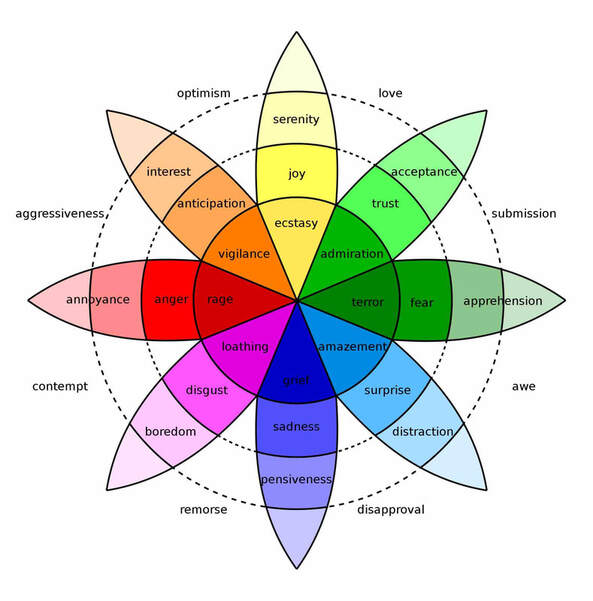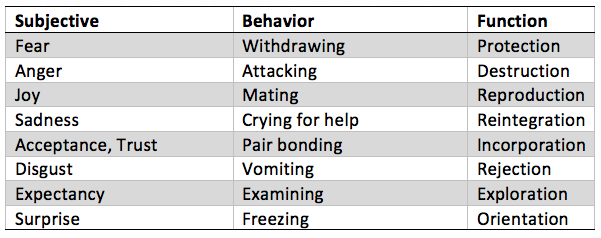The Emotion Wheel: Purpose, Definition, and UsesBy Helena Rose Karnilowicz, Ph.D.
What are emotions and what is the emotion wheel? Learn how to identify and label your emotions using the Emotion Wheel.
*This page may include affiliate links; that means I earn from qualifying purchases of products.
What is the Emotion Wheel? (A Definition)The Emotion Wheel was created by Robert Plutchik to help organize complex emotions and so that people could more easily gain clarity, identify, and label their emotions. We'll dive into the specific emotions in the emotion wheel, and how to use it, but first let's talk a bit about what an emotion is.
What Is an Emotion?Emotions prepare us to respond to a perceived or real environmental stimulus (e.g., being chased by a mountain lion or thinking that a friend is angry can both produce fear, causing us to retreat). But what differentiates an emotion from a mood, a physical state, or a thought? Emotions differ from moods in that they typically last minutes to seconds, whereas moods can last hours to days. Emotions also produce a set of coordinated responses (more on this below).
Theories Behind the Emotion WheelEmotions have been of interest to philosophers and scientists for centuries. Currently, there are two primary theories about emotion.
The evolutionary theory of emotion states that emotions evolved to enhance survival by prompting appropriate reactions to the environment (e.g., like being chased by a bear). While humans generally do not have the same threats to their survival as our primal ancestors, emotions still serve important social functions by communicating intentions and future actions. According to this view, emotions are thought to have clear neural bases in the brain and are universal across cultures and species. As such, emotions are thought to be innate. Plutchik's emotion wheel uses an evolutionary perspective on emotion. Are You a Therapist, Coach, or Wellness Entrepreneur?
Grab Our Free eBook to Learn How to
|
Are You a Therapist, Coach, or Wellness Entrepreneur?
Grab Our Free eBook to Learn How to Grow Your Wellness Business Fast!
|
Terms, Privacy & Affiliate Disclosure | Contact | FAQs
* The Berkeley Well-Being Institute. LLC is not affiliated with UC Berkeley.
Copyright © 2024, The Berkeley Well-Being Institute, LLC
* The Berkeley Well-Being Institute. LLC is not affiliated with UC Berkeley.
Copyright © 2024, The Berkeley Well-Being Institute, LLC





